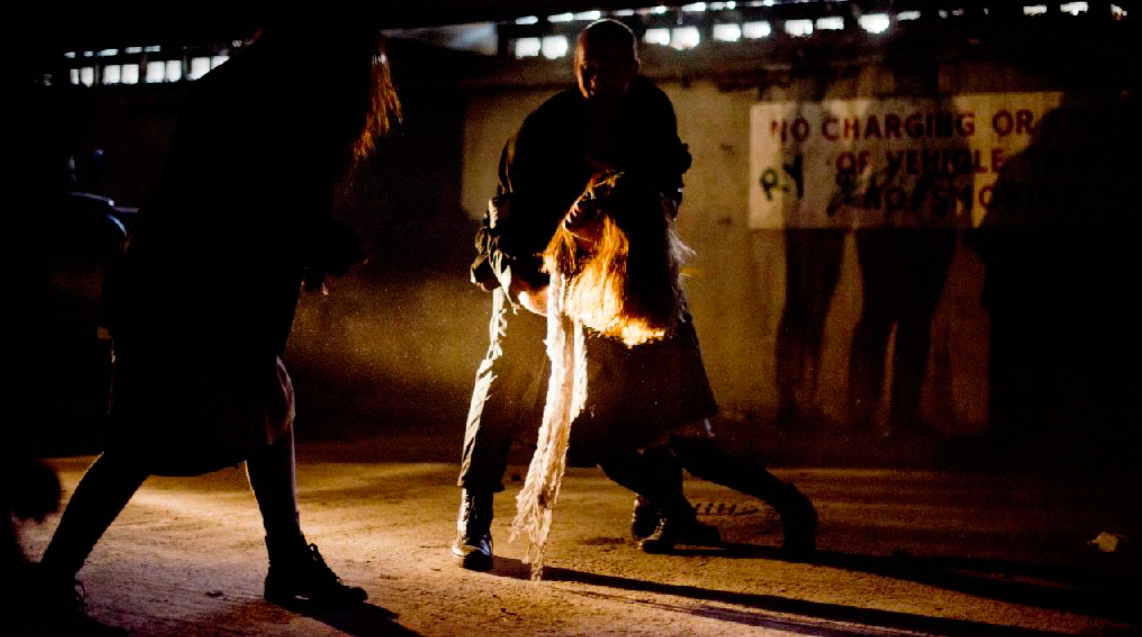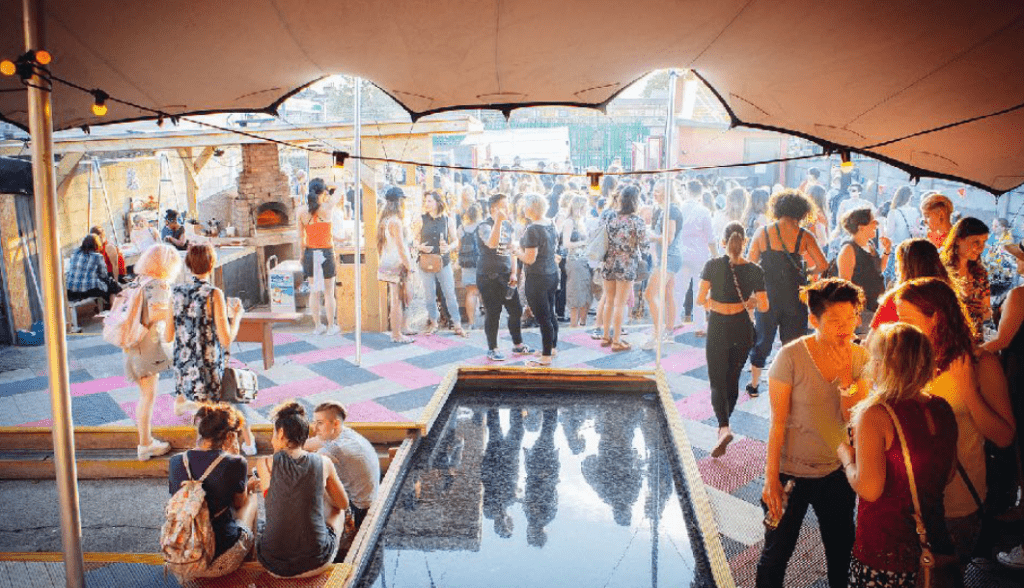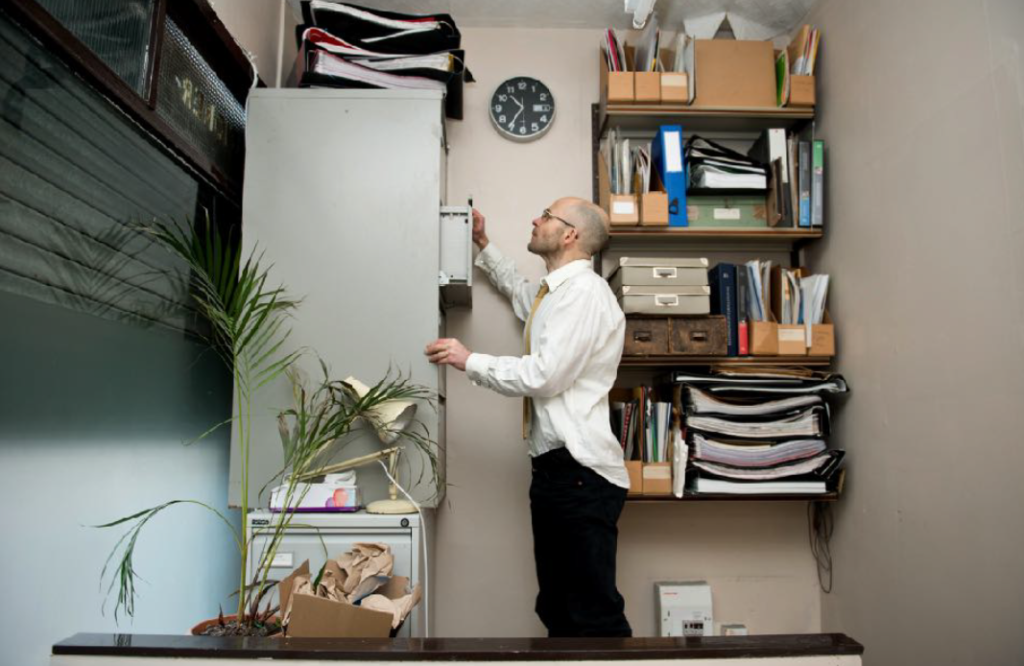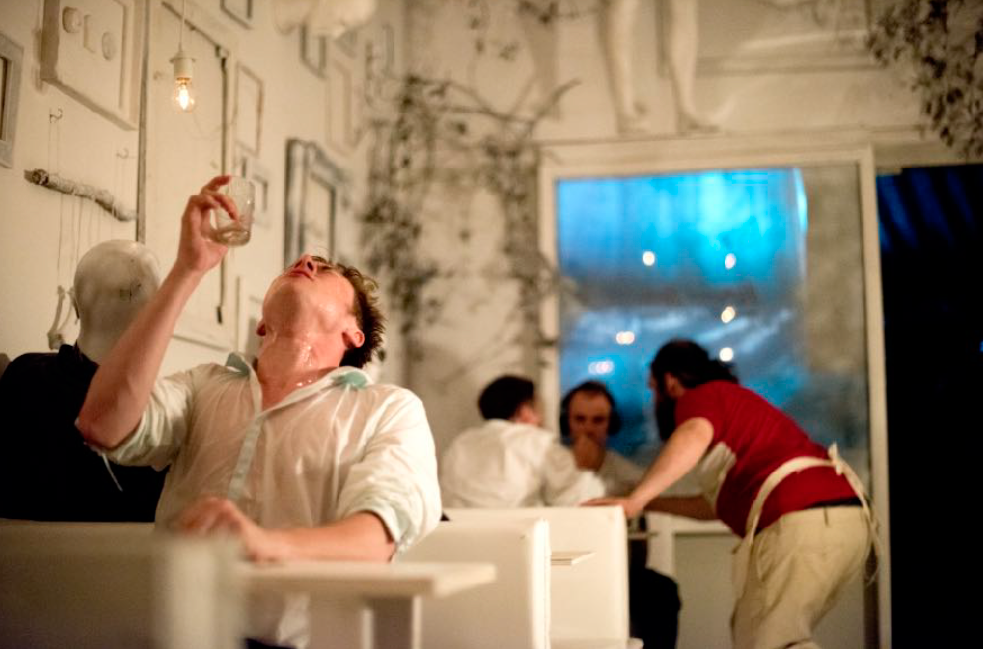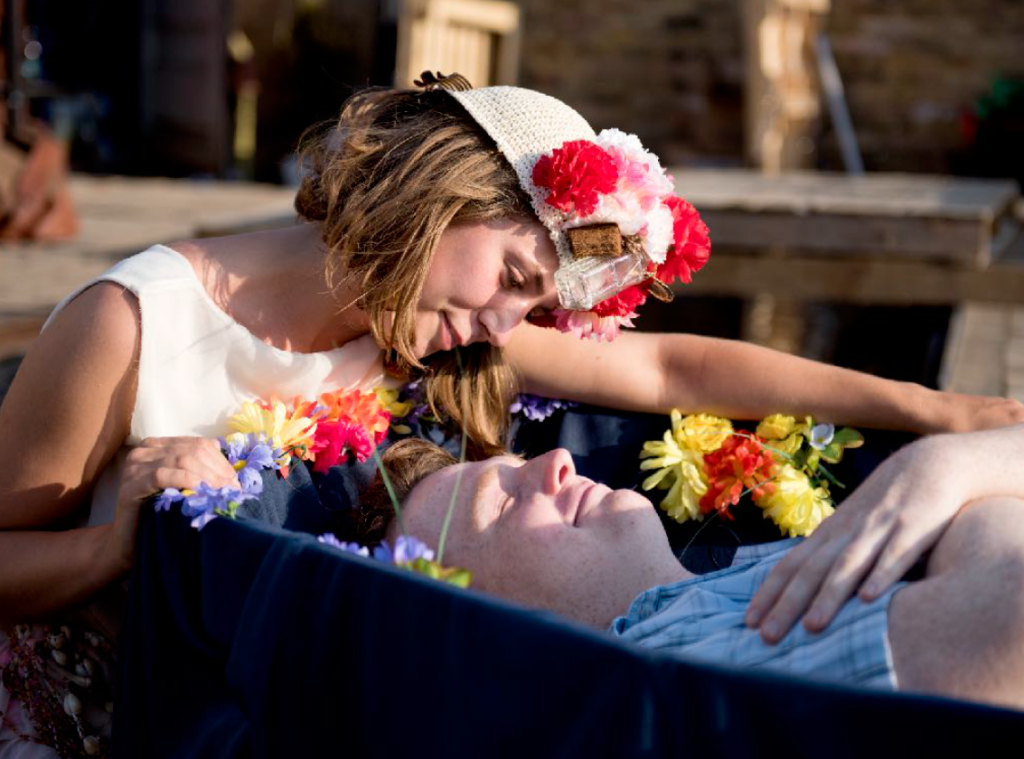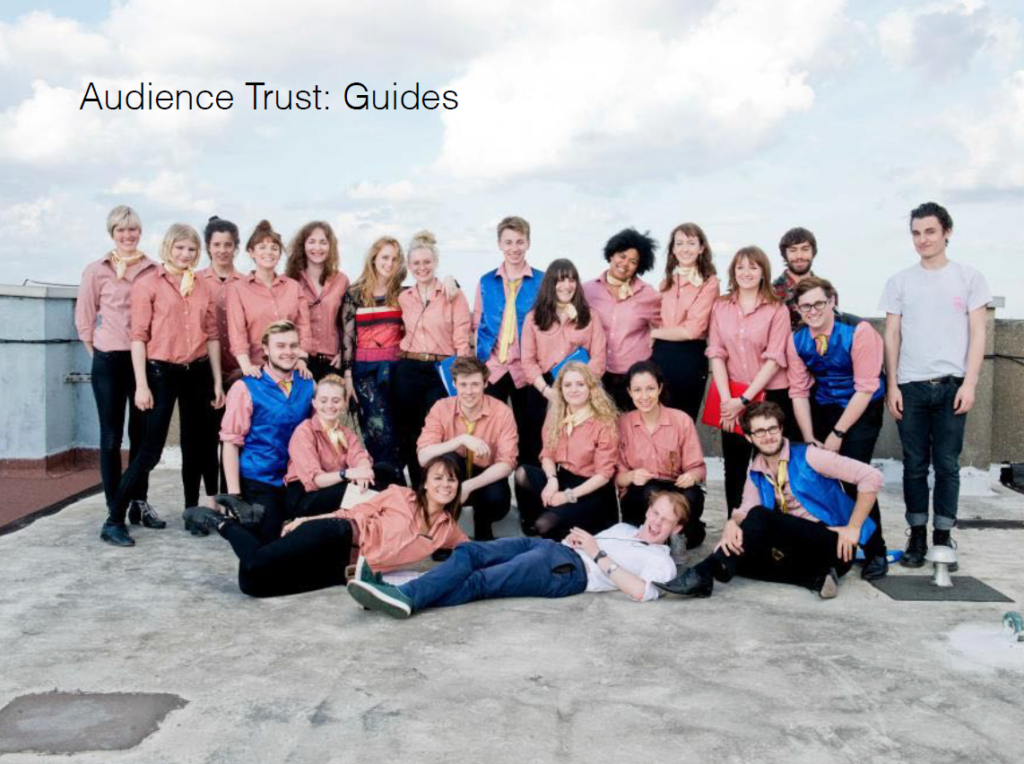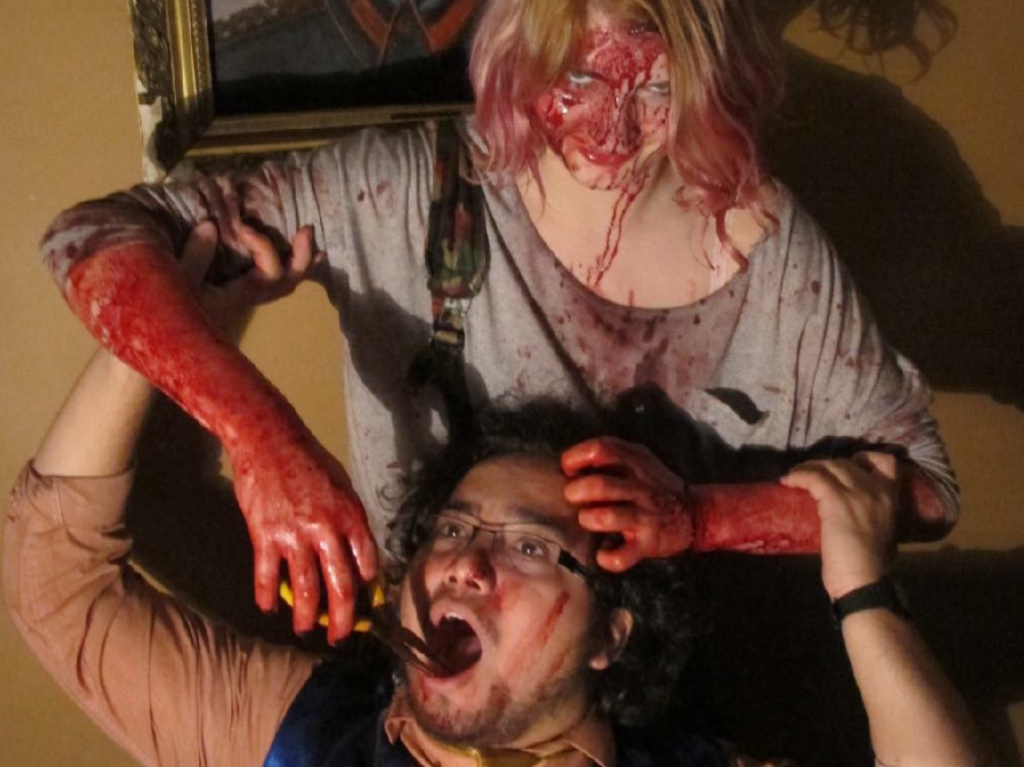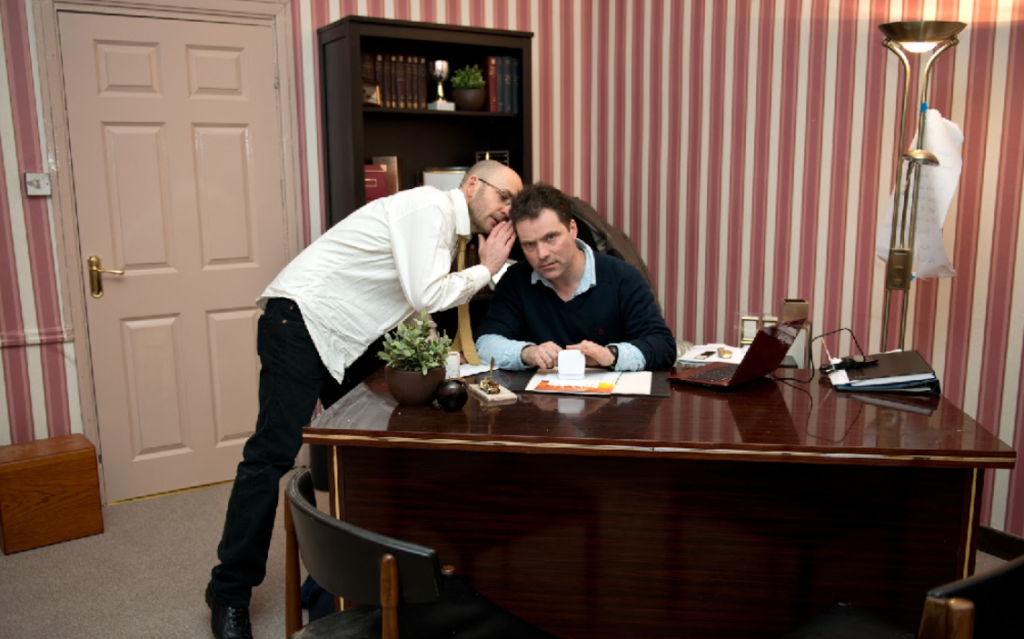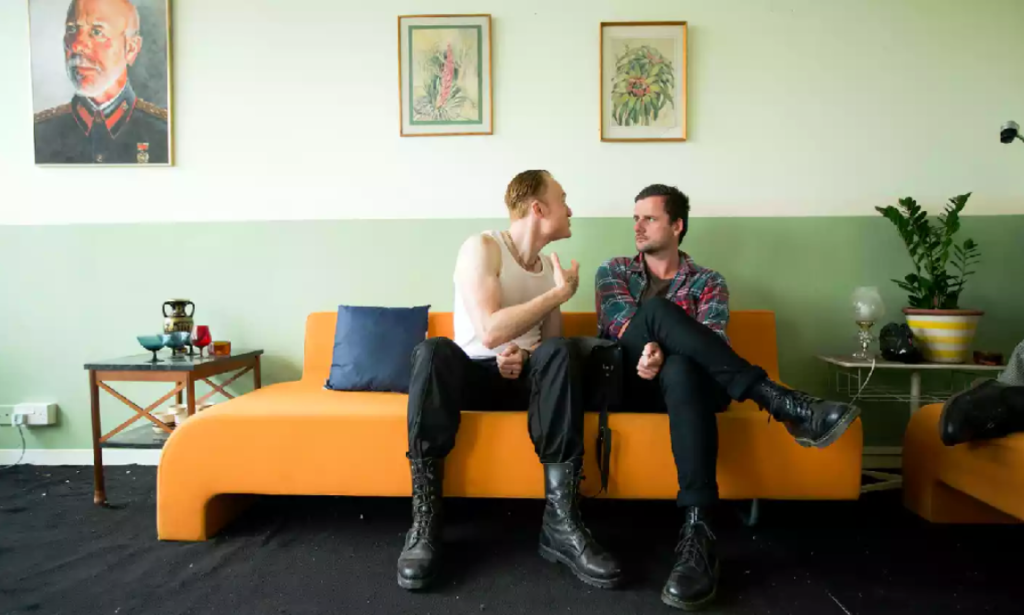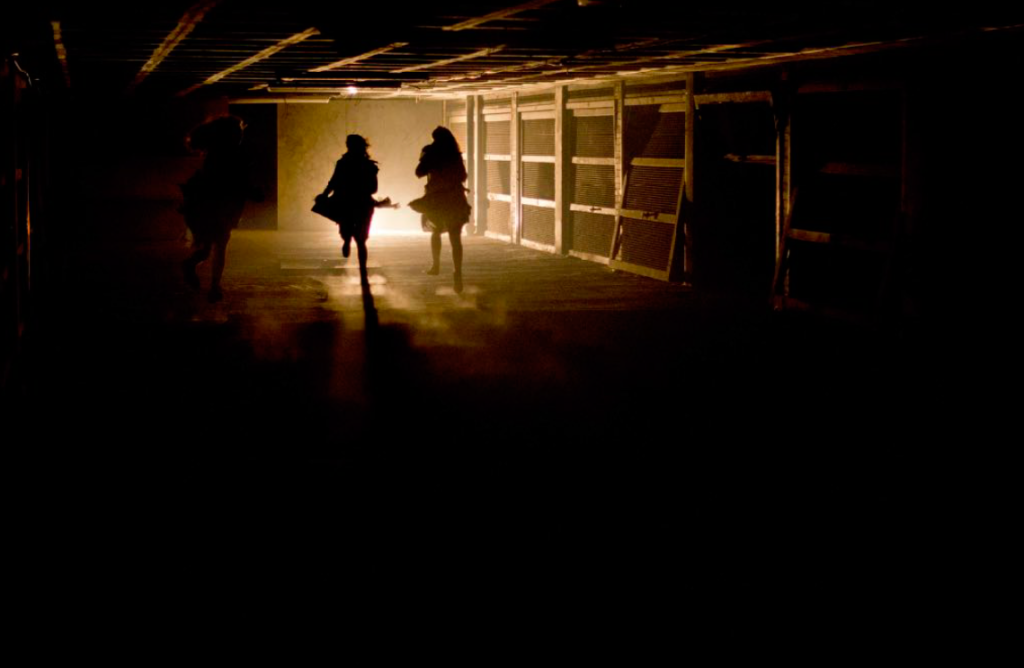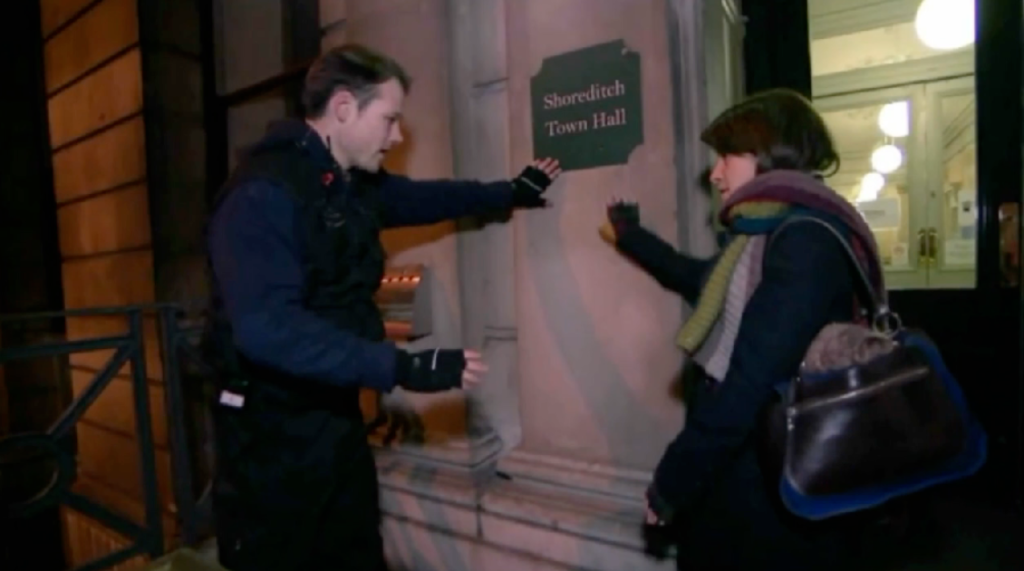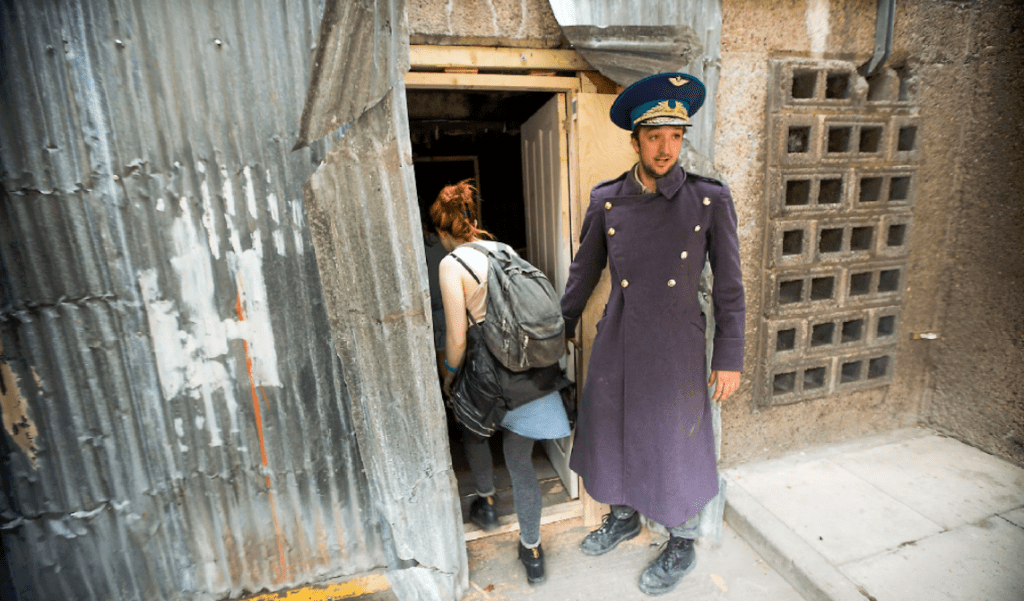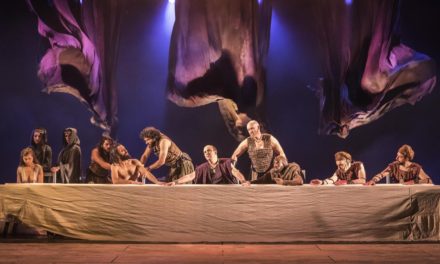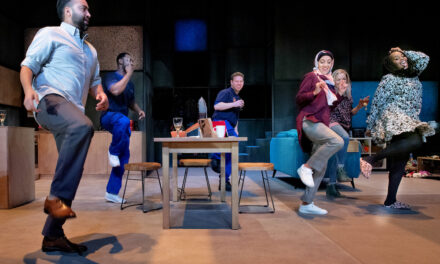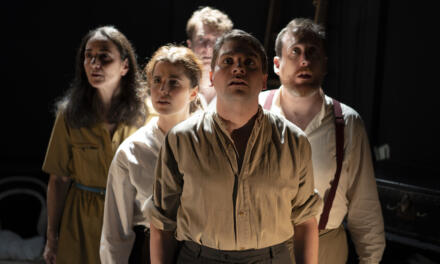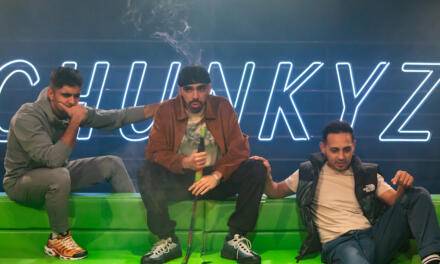Felix Mortimer is a former member of Punchdrunk who has gone on to found RETZ with Simon Ryninks to respond to the need for a dialogue between performance, film and the internet. Felix has produced and directed many large-scale site-specific, technology-led performance projects. Felix has also worked for BBC Radio Drama, Punchdrunk, The Royal Court, The Old Vic and The Bernie Grant Arts Centre and is a fully qualified teacher. RETZ performed an experimental version of Shakespeare’s The Tempest called O Brave New World, which took place over six months and across the physical and online worlds. To read PART II of this article, click here.
I’ve been a theatre director and producer in London for the last ten years putting on about 30 productions in that time and living the whole of my life in North and East London. I’ve always been intrigued by formal experimentation in storytelling.
For the last two years, I’ve been running a performance space in Tottenham, North London called Styx. Styx is dedicated to telling vital stories from within a diverse community that is dangerously underrepresented.
What are the challenges and obstacles you might encounter when creating a piece of work that uses more than one platform?
You must look at the general considerations like site, form and audience. I’m going to concentrate on observations because one of the main things I want to emphasise is that each process is absolutely unique.
The main thing to think about is how drastically the story-telling landscape has changed in the last ten years and how we are responding to this. We sift information, editing instead of retaining it. Our attention spans are shorter and reactivity and immediacy are prized over depth.
As theatre-makers and practitioners; we deal in the live, the immediate, shaping people’s experience around breathing characters in the real world. Just as when storytelling moved from the radio to the tv, our current information revolution has given us brand new tools and ways of thinking about producing theatre. Marketing companies, media organisations and artists are all racing to make interactivity meaningful.
We, theatre-makers, are making a shift from the audience being a silent observer to at the centre of the narrative. Companies like Shunt, Punchdrunk and Secret Cinema allow audiences to wander like ghosts piecing together their own unique journey. Even TV companies are catching on, Netflix has announced that they will let you chose the fate of their characters from 2018.
My company, RIFT, was formed to build worlds around existing narratives. We want to tell stories we all know and love: again. We want to thresh them through repetition, telling, retelling, streamlining and defining for now. To give examples we have experimented with one-on-one performance, 24-hour rolling news, food and drink, spin-offs and complicated audience journeys.
We can break down this topic into four areas: building a story around a site or group of sites, working in a variety of forms, working with an active audience and using these tools to build a narrative universe. I’m then going to talk about three of my productions, all adaptations, two Shakespeares: The Tempest and Macbeth, and a novel: Kafka’s The Trial.
Site
The site is your grounding when beginning to build a multi-platform story.
Sites defy the convention of entering a space and sitting in a seat. Sites are nuanced: they have multiple spaces requiring journeys in or around them. Building theatre like this forces you to think about the audience differently and in some cases to literally build a new type of theatre.
Companies, like the ones I mentioned, Shunt, Punchdrunk, Secret Cinema and many others showed us how found sites could present atmospheres and opportunities to unravel stories. Many of these productions discarded storytelling altogether in favour of building experiences.
It’s probably useful to think about the last ten years and how thinking and making has changed it’s approach to site in that time.
A good place to start is the shift in definitions:
Site-specific: an art world concept of designing artworks for places; in the style of Richard Long or Anthony Gormley. Artists make a piece of work which then sits within a site, creating a dialogue and forcing a connection.
Site-responsive and site-sympathetic which means building a new work which stems directly from where it’s located, it can only really exist there.
I’ve heard others like site-generic, area-specific etc. and then along the big definition which now dominates: ‘immersive’ which seemed to be because people we’re bored of saying ‘a bit like punchdrunk’ and immersive has come to mean an experience where you explore something built or failing that, something atmospheric.
Immersive dining, immersive cinema, immersive cocktail bars, immersive petting zoos, immersive carol services. This must be one of the first times that theatre has led the charge of a movement so pervasive across other forms. For a long time, immersive was tagged onto every production that wanted to boost sales but starting in the lobby of a theatre can’t save a production… and it’s meaning has started to wane.
Still, the go to term, especially in marketing with its unlimited funds, dominates this immersive centred around instagrammable moments or potential watercooler chat like “I got dragged into a cupboard” “They gave me whisky!”
While these terms have begun to lose meaning, the tools and work itself are very valuable. I have worked across a variety of sites and each presents a different set of bespoke dramaturgical challenges. Responding to these is the creativity of making theatre now. It is because of this diversity of approach that not much academic exploration exists bringing theatre out of a controlled environment means you have to shape, adapt, morph and mould depending on where you are at that moment and pieces demand a very different rehearsal, adaptation and performance process.
The practical considerations about working include the fact that your canvas is organically planted within a landscape and community, brimming with history and past use. These are rich resources to plunder but can overwhelm a production and the most successful have an understanding of these factors but build on an atmosphere or flavour that resonates.
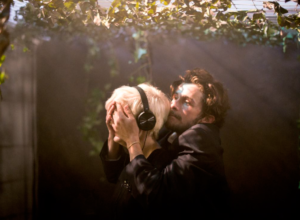
Photo: Camilla Greenwell
I directed a production of Doctor Faustus inside a 1920s library, a production of Sarah Kane’s Blasted from within the hotel room it was set. I built a hoax museum which was open for two years, a production in the oldest house in Scotland where the coach journey to the site became as important as the story delivered within the house itself. An audio adventure around a 1920s town hall in North London where the sensation of walking around a historic building alone and in the dark allowed imagination to run wild while a voice in your ear planted ghosts and tempted you into interactions.
With RIFT we use a framing device to place all of our productions allowing sites to adopt characters, the set their costume and their performance a masterclass in an atmosphere. Working on a new site is almost like building a theatre from the ground up with the sole purpose of housing your production. Making work on site transforms you into an artistic director, venue manager, box office, toilet manufacturer, lighting and sound technician all rolled into one. You strike a resonance with space you inhabit and attempt to grapple it into helping you tell your story. This doesn’t always work as planned but it’s definitely a start.
Form
So once you’ve got your site. Spent weeks researching it, and lying on the floor with the lights off to try and commune with it. Now you’ve got to put something in it…
We build experiences where characters could be quizzed without faltering and design could be so detailed the seams between reality and fiction were unnoticeable.
We started off telling stories that alternated between live and recorded to see what the difference was, but soon this formal investigation spiralled outwards, spawning websites, spin-off scenes and events, bands, albums, and web series.’ Eventually, we gave over our story to others and they concocted characters, made costumes and machines all playing along as co-authors.
We began to notice that a live encounter, an audio recording and a filmed section had radically different effects on the audience. Marshall McLuhan said that“the medium is the message” but we wanted to try and work out what that message actually was. Our characters gracefully skipped from youtube to spin-off events and then plunged back into our central performances. We wanted to understand the best medium to communicate different ideas, just like understanding the what our sites said about our work, we wanted to understand what youtube, tweets or parties enabled us to say, and what they restricted us from being able to do. Now that our audience was unrestricted, how do we deliver them the stories we want to tell?
A lot of this came from how people consume content. We have built up a regulated set of behaviours to watch theatre, even to have conversations, we know how to behave at events, where to go, what to watch and who to engage with. Watching a youtube video is very different from watching a film in the cinema. The worlds and even the file formats might be the same but the frame is different. We had sorted our site out, that was our frame, we just had to work out what message the medium told within it.
I’m going to start by talking a bit about the video: and how we built stories up with it. I want to use a specific example where it allowed audiences to form a unique acquaintance with a character:
In our piece O Brave New World, an adaptation of The Tempest over six months from an East London shop, we introduced the character of Ferdinand through video screens inside the installation itself. He flashed up on CCTV as he stole towards the complex where Miranda was based. He then burst into the shop.
After the performance ended we gave the audience another piece of the puzzle, the events prior to his arrival in a YouTube video. This famous ‘Full Fathom Five’ section gave the audience an understanding of his state of grief before discovering Miranda.
Ferdinand then became real for audiences, and four months into knowing him could interact and quiz him, even being present at his wedding.
This selection of perspectives and approaches allowed a mythology to build around his character and story. He came into sharp focus, and faded out of it, present and omnipresent. More like friends or family members might be in your lives.
Traditional theatre and cinema ‘immerses’ you in the story of one character for several hours, forcing you at first to take an interest, and then empathise with their story. You sit, undistracted, watching them. Here we offer an alternative, an acquaintance, an introduction, more information a week later, another meeting. Time to build an impression.
This is an example of delivering content discreetly, video, then, live performance then back to video then in real life again. Media can also be used together with the live experience to provide a completely different layered effect which I find works most effectively with audio.
In HALL (2009), audience members were led into an abandoned town hall by a voice, shrouded in darkness, characters haunted it’s hallways, remaining almost silent the audio track illuminated and provided a layer of commentary that meant that very little else was needed. For the transmedia practitioner, audio provided a glue to bind transient elements together coherently.
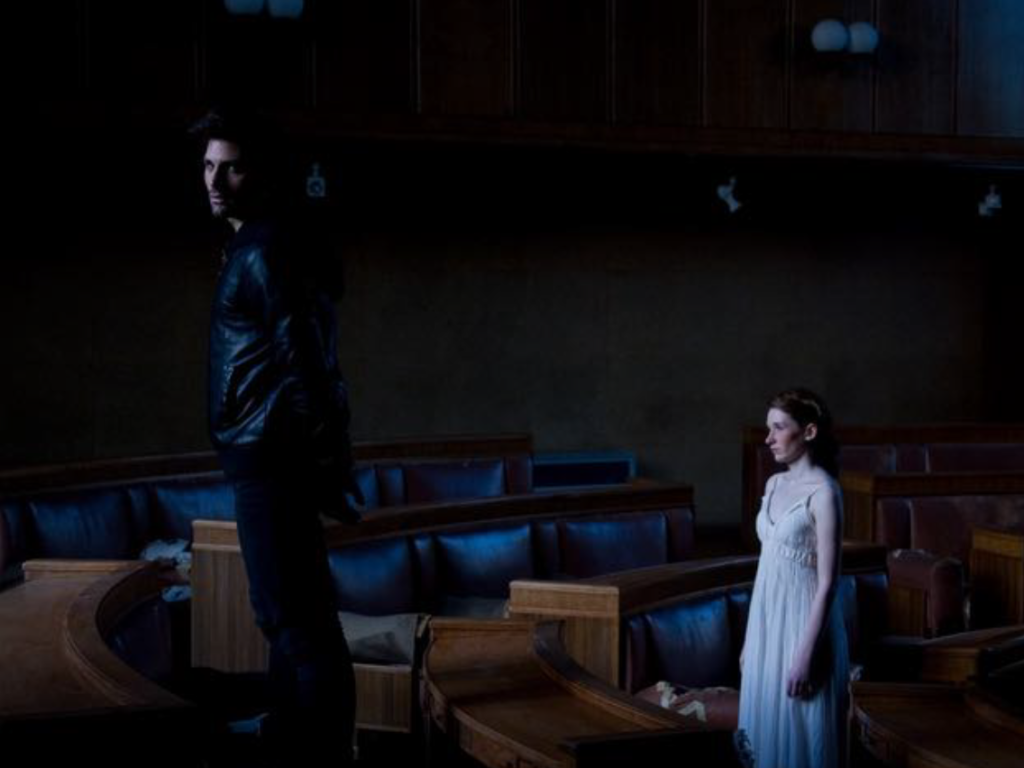
HALL (2009). Photo: Camilla Greenwell
In our Kafka adaptation, The Trial, we used this technique again, and urged audiences to call a phone number after they were arrested, this phone number contained a 12-minute answerphone message from the firm of solicitors they were about to visit. They listened to while walking up Hoxton Street in East London. This phone call played testimonies, commercials, a conversation between the lawyer and his assistant who you were about to meet. This added a surreal layer to the very real reality you were walking through.
Without fail, every single audience member had a story about that walk. “Was the man in the van following me?” “Did you plant that sign?” The addition of the phone call and urgency of their situation had driven their mind into paranoid overdrive. We didn’t have to do anything.
Styx, the play, took this creativity one stage further, audiences entered our warehouse in North London and listened to a story about a man travelling with an urn. We played with the disconnect between the story and reality, in creating elements that harmonised and elements that created discord and were deliberately different or anachronistic.
Creating two stories that at times spoke to each other across two different mediums allowed the audience an authority, a position in the narrative, they chose what to privilege, their creative connections between the two sources of information led what the narrative meant to them. The actors and the set choreographed these connections and emphasised elements of both.
The most powerful interventions can be the most simple. Your story demands telling, and if it has that urgency it will burn through any media. Different media enable you to deliver different parts of that narrative in different situations, but the environment it is consumed within is equally important. A film shown in your home in bed or in on a 1970s tv as an army storms past has very different meaning. You are conducting a symphony of elements, and it’s your job to perfectly balance influence.
Audience
So you have places to sow your narrative, and understandings of how it can be seen and heard (or tasted, felt and smelt if you feel like it), it’s time for the essential ingredient: the audience. You can place them in a space, you can control what they see and how they see it but ultimately they are your key collaborator and more often than not, you haven’t even met them yet.
The bravery of performers, the strength of the material, the dexterity of your form and the essence of your site is rewarded by their complicity. They are central to their own experience, but also influence the experience of others, and there together within a structure designed by us, there is space for creativity. [The magic happens].
We want our audiences to feel integral to the narrative, cast as sole protagonist, observer, ghost in the machine. The rehearsal process centres around this absent collaborator and their potential reactions. In our performances, we want to build comfortable space for improvisation, interaction and creativity for our audience.
They have been pulled under gaberdines, collected stamps in passports, eaten eel with Caliban, been shot down river in coffins, been arrested, pleaded their innocence, danced the yak dance, wrestled killers to the ground, drank blood, been awoken by witches clambering across their beds and stood windswept on the roof of a towerblock at 2am.
Whether they like it or not, they are participants. There is no dark to hide within here and actors are trained to sense action or inaction and adapt their performances to enhance their ownership of the story.
It is our ambition to emulate the world in which we live the create worlds that sit comfortably within our own emulating how we interact, building narrative by osmosis.
Here are a few examples and techniques of how we have worked with audiences to multi-platform performances:
Audience Trust
During Macbeth, audience members in ten groups of ten were accompanied around Balfron Tower by guides assuming a role within the household. These guides developed interrelationships and acting like a chorus commented and commentated on the performance as it was being enacted; taking on all the small roles like handmaiden or messenger and the stage management of their group.
They became a bridge between audience world and the narrative world and they built their own narratives alongside ours. They became the lifeblood of this production ensuring the best and most integrated experience possible for their audience members while also through unflinching belief in the world around them reinforced the suspension of disbelief in the audience.
As Macduff’s troops began storming the flats the guides and the audience watched the television coverage sharing their stories in bits across the night: Their personal lives peppered the wider narrative.
As the soldiers entered, many of the guides improvised reactions and interactions with the on coming armies, building defences or devising elaborate death or defection scenes. Despite these being imagined characters, audiences had built up a strong rapport and trust and had strong reactions to their deaths. These guides galvanized the main story and gave it a unique personal pertinence.
Audience Escapism
We send out passports and visas to our productions and encourage audiences to decorate and design an identity to assume in our narrative universe. This enabled complicity and ownership from an audience of the part they played. Similarly, Secret Cinema encourages audiences to dress up, enabling escapism in audiences while activating role play.
Another very powerful way to create an escape from the real world was taking away people’s mobile phones. Severing their umbilical link to the rest of the world created a psychological distancing, not only do they have to be more present they also have no recourse no escape creating a sense of risk. We are quick to forget that we go through life with the constant danger of interruption, of being shaken out of daydreams or fantasies and back into our black mirrors.
Isolating Audience
In The Trial, audiences were arrested and experienced the piece on their own. During this process, we realised the profound effect of isolation on them. Sitting in a lawyer’s office surrounded by characters who are telling you that you need to plead your innocence, with no potential for humiliation or ability to disrupt the truth of the fictional universe, you succumb completely.
This seamless approach led to a reality of interaction which wasn’t clouded by external forces, audience members reacted fluently answering questions without hesitation and quizzing characters about their fate.
Submission of Audience
I recently went through a Japanese immersive horror experience in a shopping centre, for three hours we put up with stress positions, being force fed, manhandled and humiliated in front of the group. This piece called the Waldorf Project explore the concept of the cathartic power of submission and ended in all the audience members holding hands on pillows as the performers kissed our bodies. I felt constantly on edge from the fear of physical harm (how they got away with it I have no idea), but a friend maintained they relaxed into the experience and it alleviated something for her. I think we can all understand something powerful about being alone in the dark, our prefrontal cortex going into overdrive. Conversely being alone with a fictional character can give an extreme sense of safety, being a voyeur in a fictional world. My early experience of Punchdrunk productions often saw me washing characters for long periods (I don’t know why) but this isolation within a dream far from reality is one of the crucial psychological draws you can play with.
Intimacy
Considering a number of audience members in a scene, or involved in an interaction is also key. Audiences react differently when alone, in small groups or lost in the mass. We built our production Macbeth on these principles, allowing them to start their experience on their own, and then alternating between solo experiences, experiences with 10, 30 and 100 people.
Not only was the power of the site magnified by the psychological effect of a number of people you shared it with, the intensity of the performances could fulfil a complete range from the hyper-personal through to spectacular.
Conditioning
Each ‘immersive’ or site-specific production has to condition and recondition their audience members to co-exist in the narrative universe they have created. This is quite a subtle psychological process which allows the audience to understand the rules of the world they are occupying, on a basic level it might be actors being able to imply that audiences need to be quiet or active at different points or move from one place to another.
Different organisations have different techniques for this and sometimes they fall into familiar pitfalls which often obscures narrative delivery completely: the generic “come with me,” or shushing ‘guards,’ and overly efficient volunteer ushers all stamping their presence into the previously sacred narrative world.
It is abundantly clear the conditioning that audiences have been through when they attend our productions, audiences who have seen a lot of Punchdrunk urgently search draws, peek behind curtains and leaf through books, Shunt audience members are very comfortable with audience interaction clambering on performers, Secret Cinema audiences wander aimlessly, usually looking for the bar.
Theatre-maker Chris Goode said, “A promenade audience may still be stuck in the most conventional of mental auditoria if it does not feel some meaningful sense of co-authorship and power-sharing.”
We need to allow audiences to build these worlds along with us using philosophies of the internet and how our brains have evolved to navigate and create content online, can help understand impulses in the story world as well:
“the Internet is a kind of “pseudoworld” without the qualities of a physical world, it encourages the Peter Pan fantasy of being an entitled child forever, without the responsibilities of adulthood. While this has the virtues of playfulness and optimism, it can also devolve into a “Lord of the Flies”-like nastiness, with lots of bullying, voracious irritability and selfishness” – Jaron Lanier
We want to create this world that is playful, explorative and channels potentially destructive influences into responding to the narrative.
Mainly we are concentrating on creating a safe and secure space for play and creation. Audiences need to feel like they trust you and want to go on a journey with you. The more you can sweep them up in something, keep them from being bored and engage all parts of their brain with different types of stimuli the more they will fall gentling into the unreality that you have created.
Thresholds
With each production, we create a threshold between factual and fictional universe, a clear rift between the busy and tempestuous world outside and the fantasy that the audience is entering. This threshold allows audiences to shift into their role creating a clear barrier and change in behaviour. Much like actors putting on a costume this enables them to assume their new role as participant, observer, and often in this process, they become ready to adopt their new found identity within it.
With these three elements in play: the site, the form the audience you are ready to build your world… or let’s go grander than that… your universe.
Narrative Universe
We see rapidly expanding narrative universes all around us: Star Wars, The Simpsons, Marvel, Doctor Who, Pixar each offer us an interconnected set of characters, an alternate history, a tapestry of scenarios, events and relationships. Nerds pick up on inconsistencies, Fans frenetically write fantasies or alternative endings. Hypothesising what happened on Scarif, Gallifrey or in Gotham. Many attack our sequels, prequels and spin-off culture as a running out of ideas or a reticence to take risks, but all culture is built on mythologies of gods and monsters.
For a transmedia practitioner, the universe is key, you are creating a dimension which can be navigated like our own. It needs to be accessible, contain people who believe it exists and build it rather than destroy it, it needs to have seemingly no limits; seamless with the real world but completely fabricated. You need to share trust and a vision with collaborators and go on a journey with your audience.
Our universe, Bordura, already existed on one page of Herge’s Tintin. We set our work there because we wanted it to take on a cartoonish haze. We wanted to venture into a watercolour space filled with larger than life characters. It allowed us to invest in 1970s furniture and achieve a brutal communist aesthetic. Borduria gave us existing characters and neighbouring countries. It existed enough to be an inspiration, but not enough to be a hinderance to our ambitions.
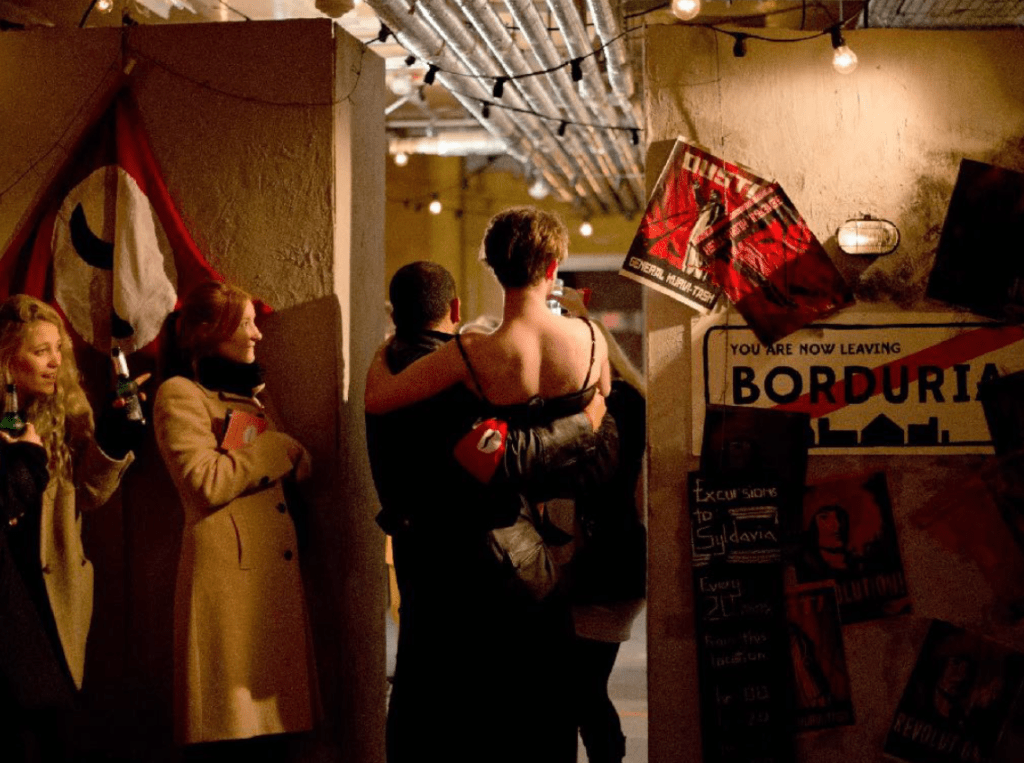
We started a mythology which built through each production, we dedicated a whole production, The Wall to rationalising our experimentation, our playfulness with it. We filmed a short Youtube series to share this manifesto further, to give a grounding to audience and collaborators about the world they were co-creating. We encouraged dressing up, silly accents and made up traditions.
So how do these universes operate in reality I hear you cry…
Dramaturgically we chose to divide the play across six months, forming it into six smaller, bite-sized performances. The purpose was to see Shakespeare differently, to be able to interpret his words more easily and to build a community around one play and set of characters that were revisited, time and again in different circumstances recounting and enacting different parts of their journies through the story.
We were inspired by the ways that television consumption was changing, people were more used to box sets which spanned one story into parts and this is very different to how Shakespeare is traditionally delivered through three or four hours of action.
We were rehearsing and developing on the hoof and here are a few things we learnt on the way:
Working with pragmatic momentum
Our dramaturgical approach divided the play into the groups of characters strewn across the island. In the first episode, we conflated two scenes which contained Caliban, Stephano and Trinculo.
We spent the first month casting and rehearsing the second month, and so on. The second month concentrated on a very long scene between Prospero and Miranda from within a super computer. The third, a non-Shakespeare piece of writing on the backstory of Caliban, the fourth the royal party in an abandoned hotel, the fifth Prospero’s cell in a library stack and the sixth all the characters converging and making their way back to Milan on a canal boat. So far, so complicated.
Logistically by the sixth month we had successfully transformed the shop six times, and rehearsed, marketed, installed set and tech, by the end of the six months our constraints became freedoms and the machinery we had built became liberating, in so much as we could do whatever we wanted with it.
Working with outside text material
For the third month, we concentrated on the character of Caliban, and delving into the rich repository of work which has been written about The Tempest. We worked with Tim Crouch and his piece I, Caliban designed to simplify the story for children. We decided to insert this piece of writing into the narrative here to allow audiences to catch up with the story, chronologically it fitted well and it allowed an audience seeing a snippet a month to have a full run down of the story before beginning to engage with other characters and the rest of the plot. It also gave us time to explore the character mid-journey, an almost unheard of experience in the theatre. We developed her back story, relationships to other characters and used the Crouch piece as an anchor to spin new hypothesises.
Borduria
Beginning in this production and spanning several others we started building a narrative universe alongside the main action for the characters to exist within. Just having a shop we had no theatre architecture to play with (box office, seats, tech booth) so all of this had to either be taken into the world or taken away. We built the world that we called Borduria, stolen from a few pages of Herge’s iconic Tintin. Borduria allowed us a palette of cartoonish mid-1960s Eastern European dictatorship to draw characters and situations from. We quickly invented characters to greet audience members, and a device, a RIFT, to bring people into the narrative universe. Soon we had erected a border between fact and fiction, complete with passports and visa, and organically a narrative and characters began to spring up around it.
Working within an existing community
While outside of the building of the narrative world, it was crucial for us that our piece spoke to the community from within which it was based. Theatres are anonymised but sites are already knitted through use into communities. This piece was made in a shop front and therefore it had an existing community connotation. We kept our building and making process transparent and invited members of the local community into the shop to help us explore the development of the piece.
Over the six month period, we had amassed a group of interested local parties. Ranging from school children, local businesses, our neighbours whose attitude changed from us being an oddity, some thinking we were an interior decoration company, to being a prized part of the neighbourhood, just as essential as a grocer, coffee shop or library.
Experimenting with food and drink as narrative objects
During the six-months of this piece, we dedicated one performance of each part to a supper club. These elements were designed to bring a three-dimensionality to the project, a wholeness and a new sense to deliver content and narrative to. Whether it was with serving scallops and eel to audiences to enhance the tastes of Prospero’s Island, or borscht over dinner in Macbeth as Banquo’s ghost appeared. We wanted to offer audiences an all-round experience, creating a narrative that entered their eyes, ears, tastebuds, budged them out of the way and sparked ideas with Proustian smells.
These logistical and production challenges yielded a magical result, an organic process that built as the months went on, a shared exploration of the text that allowed for extensive lengthy discussion of even the smallest detail. We lived alongside the characters in the shop for those six months. The production structure leading a dramaturgical investigation that extended the research and development period to exist naturally alongside the performances and six months.
This post was written by the author in their personal capacity.The opinions expressed in this article are the author’s own and do not reflect the view of The Theatre Times, their staff or collaborators.
This post was written by Felix Mortimer.
The views expressed here belong to the author and do not necessarily reflect our views and opinions.

